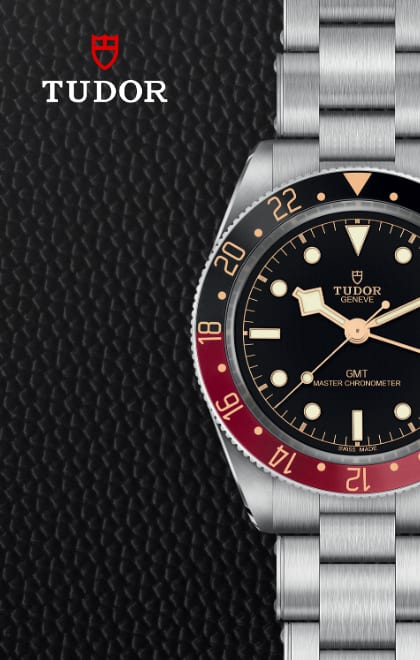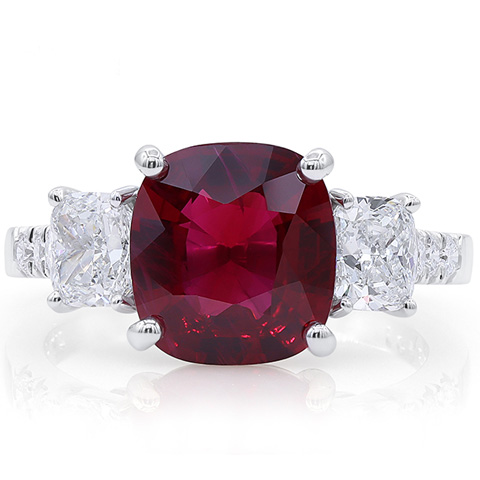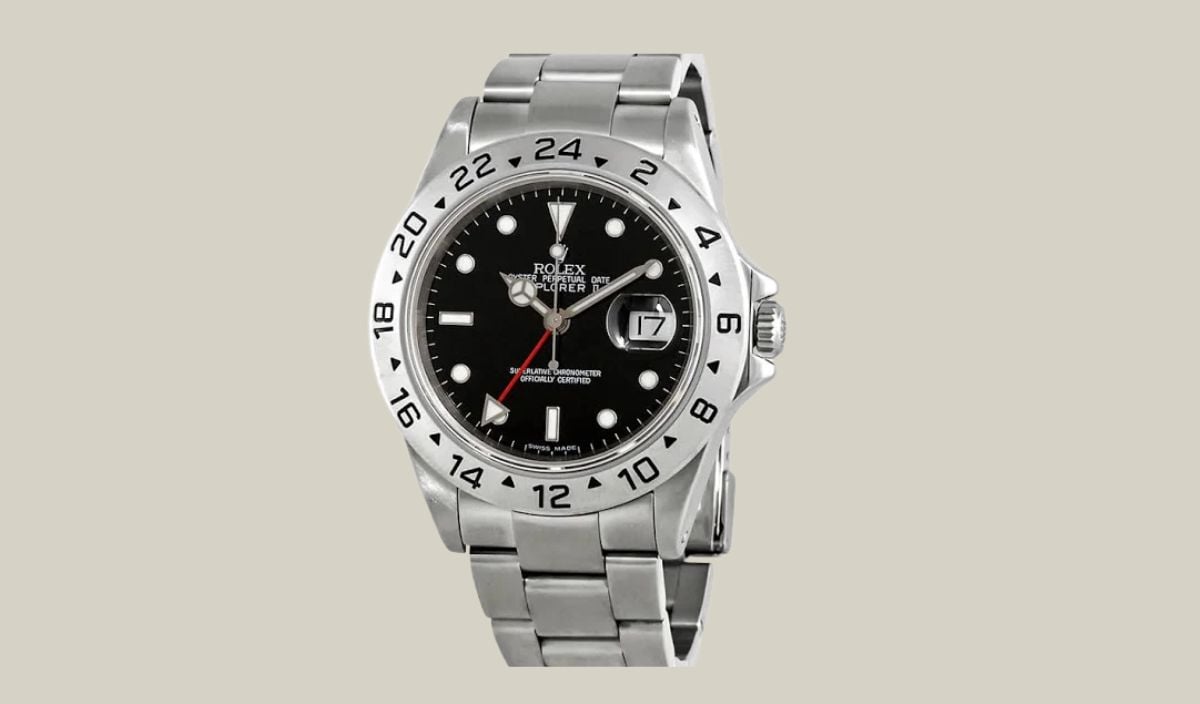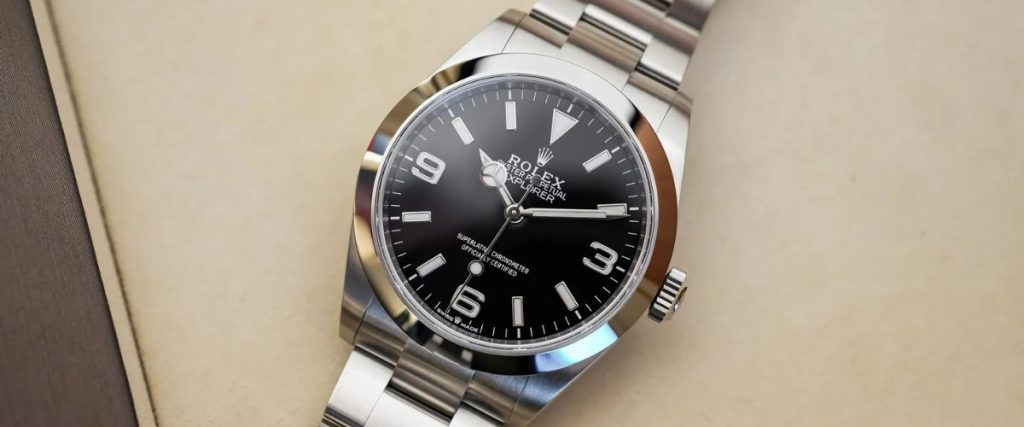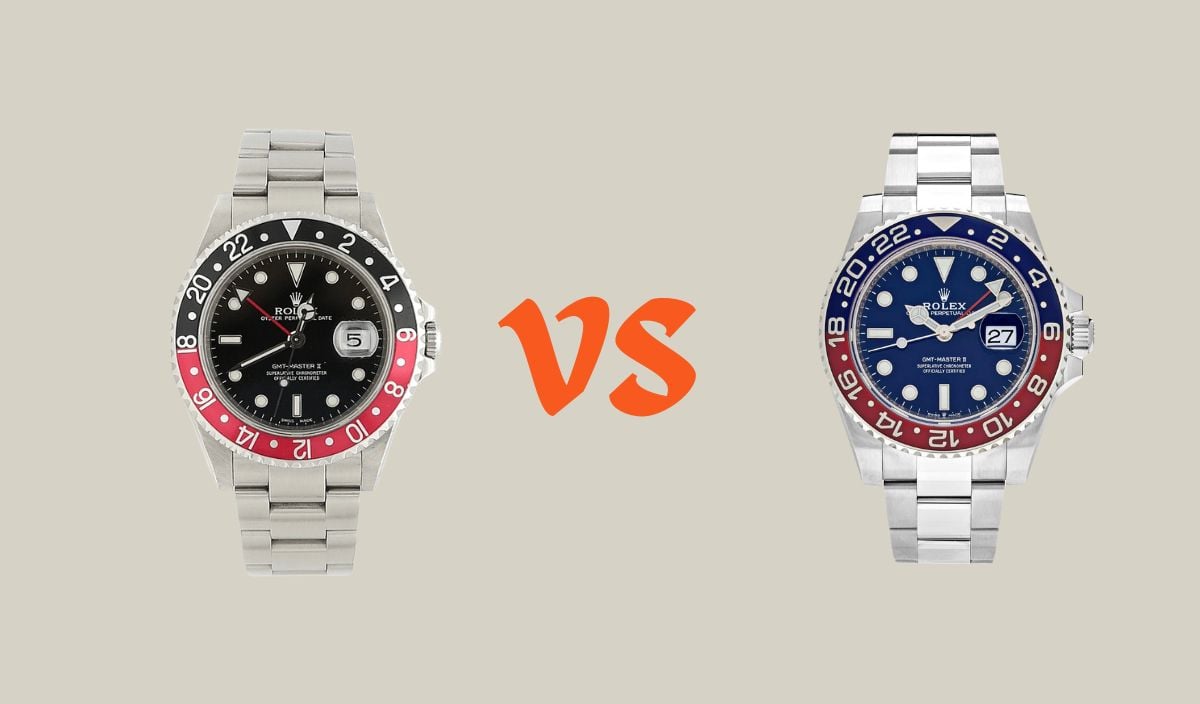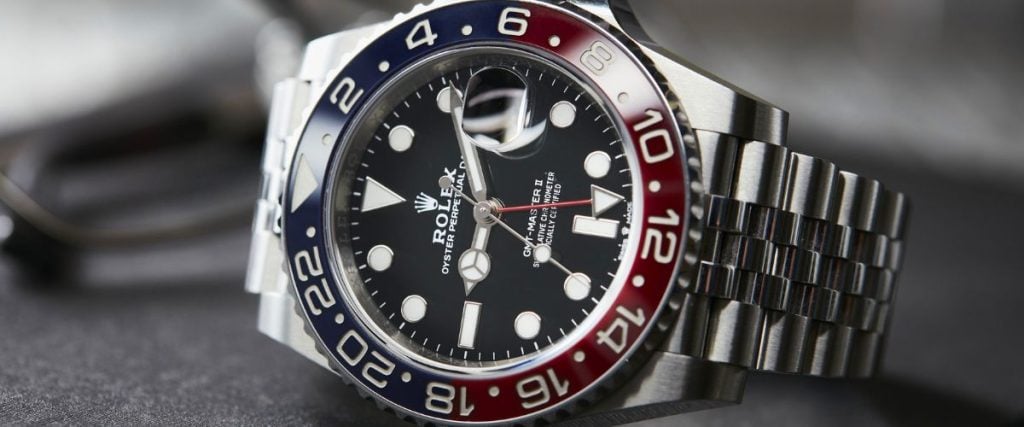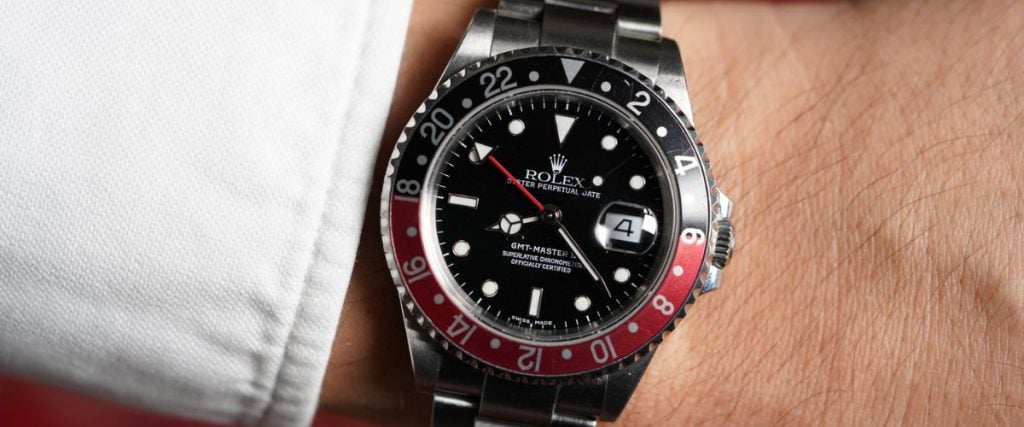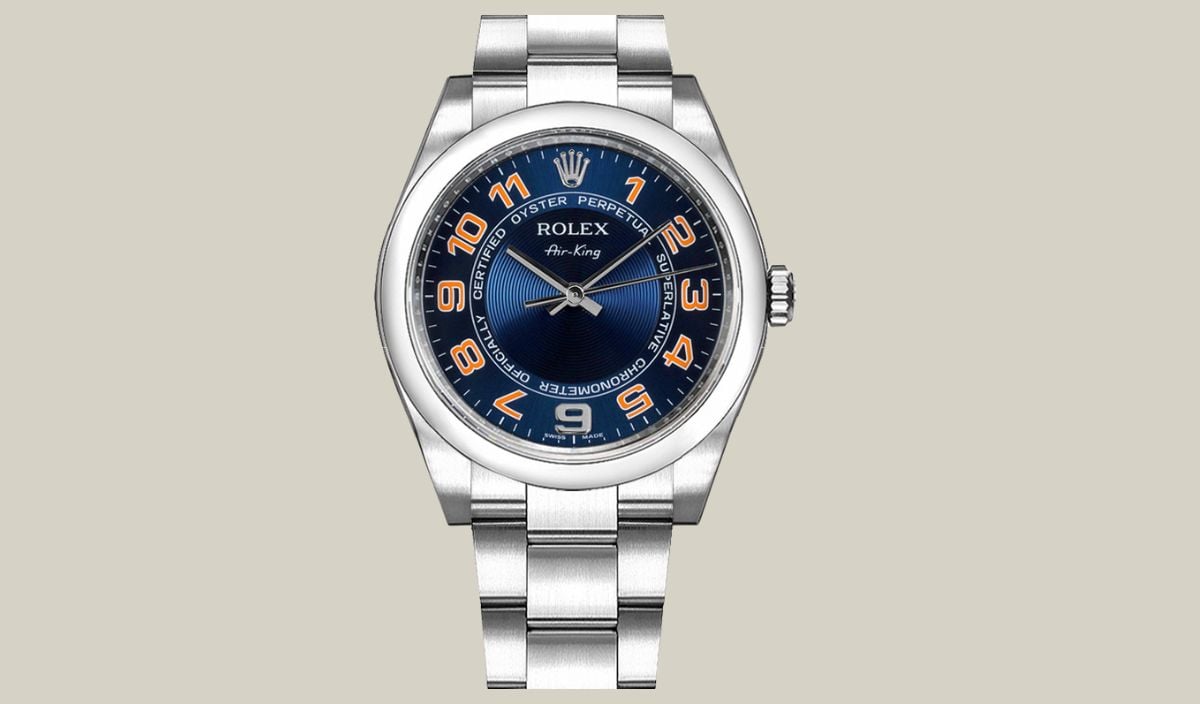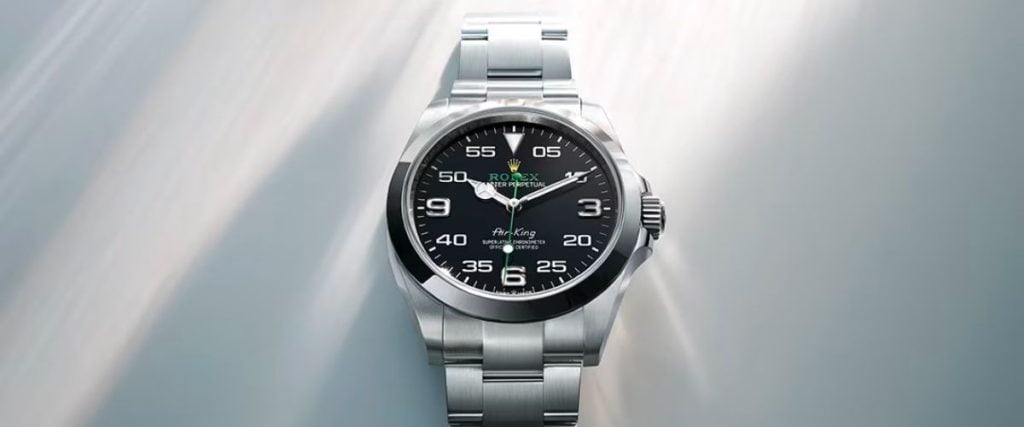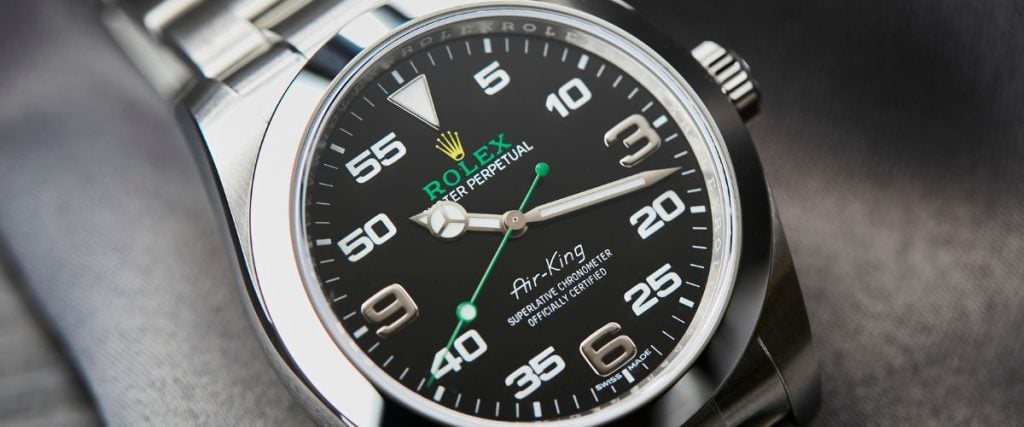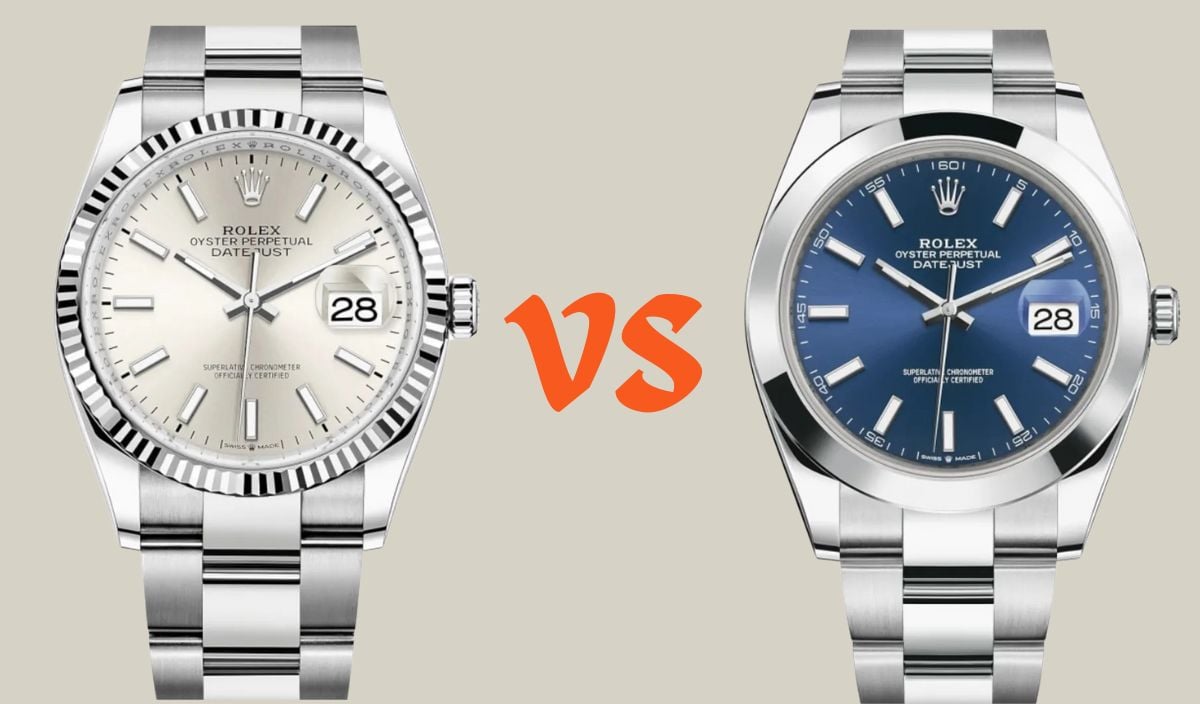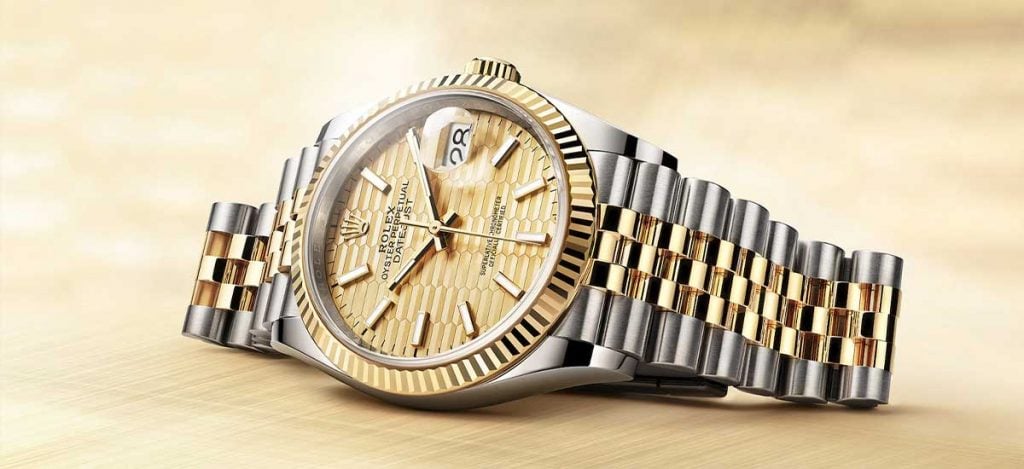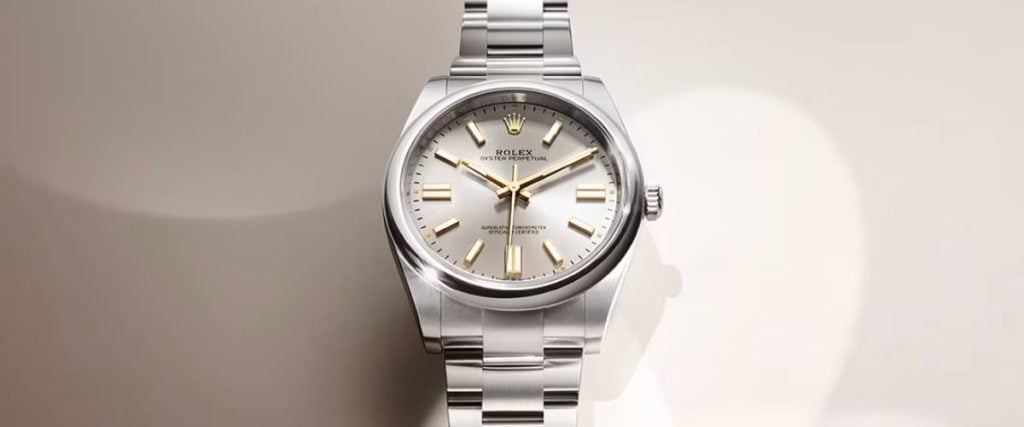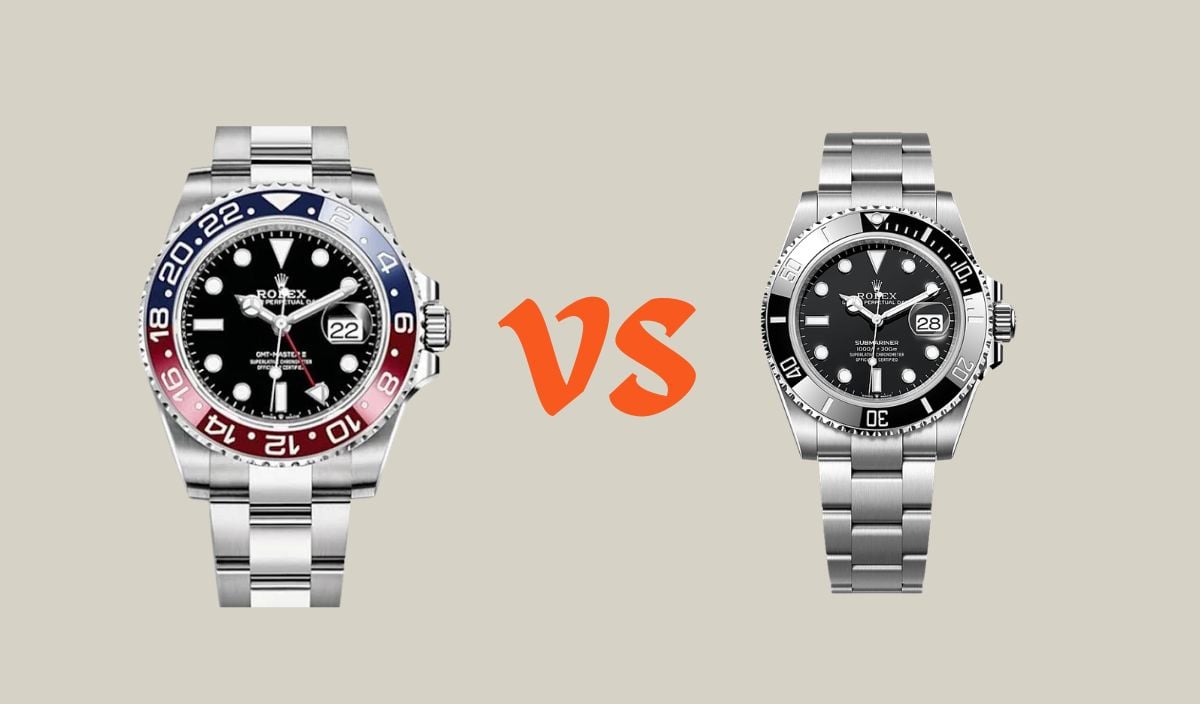
Rolex. The name alone is dripping with class and opulence. Their watches have adorned the wrists of hip-hop stars, presidents, prime ministers, and princes. Everyone knows the names of their icons: the Submariner, the Day-date, the GMT-Master, or at least their classic look. The brand’s logo is a crown for a reason.
Rolex had humble beginnings all the way back in 1905, founded in London by a young man named Hans Wilsdorf. Wristwatches at the time were barely starting to take off, and he sought to create small wearable timepieces that were both precise and durable. Precision, wearability, and functionality have always been at the heart of what Rolex does.
Their Oyster case, introduced in 1926, allowed Wilsdorf to create the first-ever waterproof wristwatch. Rolex didn’t stop there. Inventions came thick and fast through the decades: one of the first automatic movements; a date function displayed through a small window in the dial; the development of special 904L steel; a new hairspring, escapement, and balance wheel design; and so much more.
Comparing two icons from Rolex is a lot like trying to debate the superiority of Michelangelo’s sculpture of David or his work on the ceiling of the Sistine Chapel. Each is distinct and yet masterfully crafted.
Such is the case with the Submariner and the GMT-Master II, each of which has carved out a prominent niche in history and in the watch market today. Their functionality is distinct, but their appearance is strikingly similar.
So which one should you pick, between the two? Whether you’re here for a thought experiment or some practical buying advice, follow along as I break down these two giants of watchmaking and get to the heart of what makes these pieces unique.
The Rolex GMT-Master II Collection
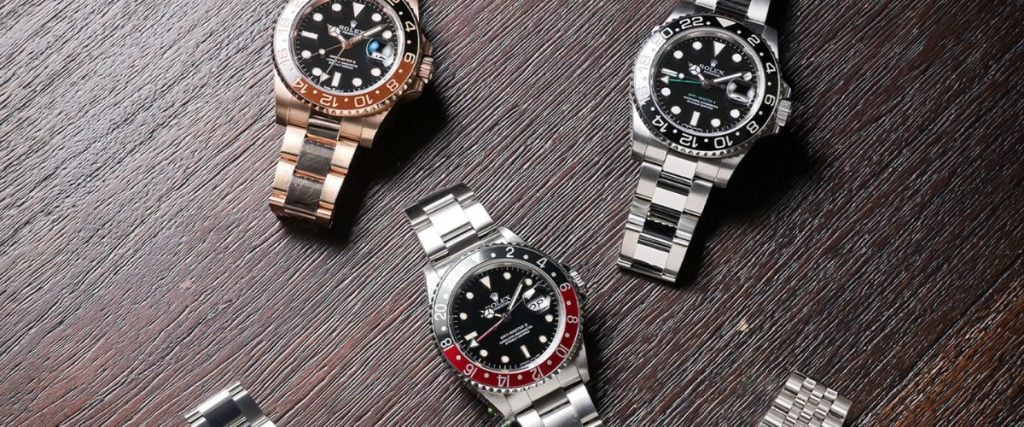
The Rolex GMT-Master collection was introduced in 1955, so it’ll be celebrating its 70th anniversary this year—making it much older than me and probably most of you reading this. This means it has an extremely long and storied history. It’s been worn by icons like Daniel Craig and Marlon Brando.
It was originally developed to help Pan-Am pilots as they crossed time zones. That’s an airline that doesn’t even exist anymore, but the watch has lost none of its appeal as it steps effortlessly from the vintage era to the modern. It’s served wearers faithfully for generations and stood the test of time to continue as an icon of the modern era.
Its popularity has led to the creation of several affectionate nicknames for the differently-colored models of the past, such as the immensely popular GMT-Master II “Pepsi” with a bi-colored red and blue bezel which I find really charming. Anyone else suddenly craving a cold soda?
Although the essentials remain the same, the collection spans a wide range of case materials and colors, with some even adorned with copious amounts of diamonds for the blinged-out rappers among Rolex’s clientele (or the inner magpie in each of us…).
Each one features the Rolex Super case, which has prominent crown guards and thick lugs to create a durable watch with a clean, utilitarian air to it. The case is constructed from Rolex’s “Oystersteel,” which is the 901L steel I mentioned above.
It’s less corrosive and holds a better finish than normal high-grade 316L steel, giving the GMT-Master an extremely elegant appearance that will last for a long time.
In my opinion, the most attractive part of every GMT-Master II is the accent color that it features, both on the bezel and on the dial, which usually has a pop of color for its GMT hand and for one matching line of text on it.
All these features, the colorful elements as well as the restrained utilitarian case, combine to create a product that’s enjoyed extreme popularity for decades.
Currently, Rolex only offers 9 models in production, and several others have been phased out. Among these are the popular “Sprite” (green and black bezel), “Root Beer” (black and brown), “Batman” (blue and black), “Bruce Wayne” (all black), and an as-yet unnicknamed model with a Pepsi bezel and meteorite dial, among others.
It’s a powerful lineup, with a variety of case materials. All are 40mm in diameter, which is a solid wearable size for most wrists, and at 12.0mm thick, it’s not going to wear like an ungainly block of steel.
Before we leave our analysis of the GMT-Master II, you’re probably wondering where the “II” came from. Of course, it was first released under simply the name “GMT-Master.”
The collection experienced an important evolution in 1985, which led Rolex to introduce the number after its name. (I wonder if their other collections will ever have a change like this… a “Submariner II,” anyone?)
The key difference here was to make the GMT hand completely independent of the hour hand. Previously, you had to use the GMT hand alongside the rotating 24-hour bezel to track a second timezone.
Now that the GMT hand is independent, you can track a second time zone with the hand and now use the bezel to track a third at the same time. Otherwise, the watch is the same heritage-inspired beauty, just with an extra boost of functionality that is an objective change for the better.
The Rolex Submariner Collection
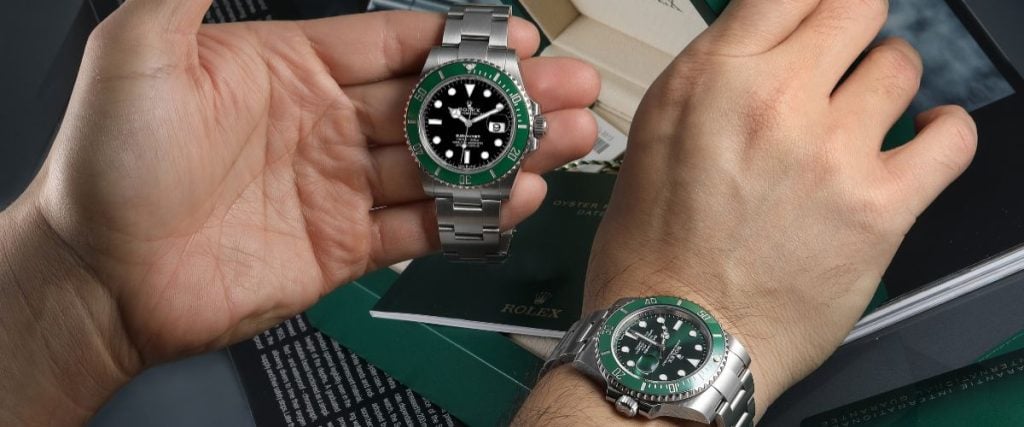
If any watch can go toe-to-toe with the GMT-Master II in the heritage battle, it’s the Submariner, which was introduced just one year earlier in 1953. At its release, it was the first-ever watch with 100m of water resistance, and it now can go much further underwater with 300m of water resistance.
Unlike the GMT-Master II, the Submariner is much more subdued, with a typically black dial and its monochromatic bezel being limited to black, blue, and green. Without a doubt, the most iconic Submariner is the simple black-on-black ref. 124060 or the ref. 126610 with date.
It’s interesting to see how the basic design of the Submariner is what makes it iconic, rather than the colors of the GMT-Master II, where the “Pepsi” is the best-known model. Overall, it’s clear that the appeal of the series is for its strong utilitarian design and tool-watch focus rather than the slightly elevated flair of the GMT-Master.
The dive bezel of the Submariner is made of Cerachrom scratch-resistant ceramic, just like the GMT-Master, and instead of the 24-hour scale, it has a graduated timing scale for tracking the length of your dives.
If you’re like me and you prefer to stay on dry land, its simple design means that you can easily track anything in your day-to-day life. I find it’s a nice way to get the functionality of a chronograph with a much simpler design that doesn’t have to sacrifice water resistance to add pushers.
Like the GMT-Master II, it’s also built around the Rolex Super case, with the same strong crown guards and lugs, but it’s just a hair larger at 41mm and a bit thicker at 12.5mm. All models are the same size, but they do vary in the material used and, as I mentioned before, the color of the bezel.
Rolex GMT-Master II vs Submariner: How to Choose
Now that we’ve had a formal introduction to each of tonight’s contenders let’s get right into the matchup. Each watch is strikingly similar in a lot of ways. Both feature a rotating bezel and the Rolex Super case. Both are distinctly tool watches and are purpose-built, each for different purposes.
Both have a long and pronounced heritage and have greatly influenced watch design since their introduction. To be frank, you’d be hard-pressed to find a standard GMT or dive watch that looks very different from these two models, with the exception of a few icons like the Omega Seamaster or the DOXA Sub. Some are even just blatant ripoffs (*cough* Invicta Pro Diver *cough*)
Both also feature COSC-certified movements with Rolex’s classification of “Superlative Chronometer,” which means they’re actually twice as accurate as standard COSC certification, which is +/- 2 seconds per day.
Each one also has 70 hours of power reserve and an automatic winding movement, so the beating hearts of each of these watches are almost identical, even though they feature different functions and are given different numerical designations.
Okay, so both are very close and very exceptional pieces. Where do we start to separate them? One of the first things that catches my eye between the two is the overall presentation of the watch. While both feature nearly the same case, there are a few clear differences in their appearance. The Submariner has monochromatic bezels in muted colors. Many of the GMT-Master models are flashy, and almost all are bicolored.
Furthermore, while both feature a flat-link Oyster bracelet, the Submariner has an entirely brushed bracelet, while the GMT-Master has brushed outer links and polished center links. Overall, this combines to set the GMT-Master II apart as a slightly flashier and more elegant watch, while the Submariner is very starkly utilitarian in most of these factors.
Another clear aspect to consider is the difference in intention behind each of these watches. The Submariner was built with a whopping 300m of water resistance and a dive bezel to measure your time underwater. Its bracelet also comes with a sliding Glidelock extension system which makes it easy to slip it over a wetsuit.
The GMT-Master II, of course, has an independent GMT hand and bidirectional rotating GMT bezel for tracking three time zones. This makes it the perfect companion both for travelers and those who frequently work with others in other time zones.
Both do have particular applicability to everyday life: the Submariner’s dive bezel can time almost anything under 60 minutes and the GMT-Master II can keep you temporally connected to people far away. It’s just a distinction of which you’d rather have functionally, at this level.
Another key distinction to think about is the investment value of each of these watches. While I personally am not a fan of the idea of buying watches expressly as investments (they were made to be worn and enjoyed, not stuck in a safe!), it is also important to consider whether your watch will increase in value in the event that you need to resell it.
For this comparison, let’s take a look at the “standard” Submariner (all black, no date) ref. 124060 versus the “standard” GMT-Master II “Bruce Wayne” ref. 126710GRNR.
Both are in steel and have an all-black colorway, so there’s not any distinction except the basic differences for the watches. The retail price of the Submariner is $9,200, while it currently goes for $11,079 on the market right now.
On the other hand, the GMT-Master II has a slightly higher retail price of $10,800 (no doubt due to its increased functionality and complexity) and a market value of $18,069. Most of the other references that are like these two on either side are relatively close to the same market value, although there is naturally some fluctuation based on the desirability of each color.
It’s clear that the GMT-Master II is a watch that—at least for the moment—enjoys a lot more popularity on the market, and it currently changes hands for a lot more than its retail.
While this isn’t in any way a suggestion to buy and immediately resell your Rolex just to make a quick buck (please don’t…), any luxury watch is a big investment, and you should definitely think about its value over time when you go to buy it. In this case, the GMT-Master II has the edge over the Submariner, assuming you can get both at retail.
So which one should you choose? There’s no clear option that’s categorically correct. Each one serves a different purpose, and offers a different style.
Yes, they’re very similar in a lot of ways. But each one is very distinct when it comes down to the fine details that really come together to make the watch unique. The GMT-Master II offers elevated elegance, with the extra finishing on its bracelet and its flashy colored bezel.
The Submariner offers a refined, under-the-radar tool watch look that can provide extremely useful everyday functionality thanks to its dive bezel.
The GMT-Master II is, at the moment, more of a value piece thanks to its high market value, but it’s also clear that the Submariner is a steady rock in the market and won’t experience the fluctuation that the GMT-Master could if its popularity wanes. The Submariner has water resistance for swimmers or just bad weather, but the GMT-Master has additional timezones.
In the end, both are spectacular watches. They serve different purposes, and they each contribute to the wonderful world of horology in unique ways. Let’s boil it down to this for those of you who are only satisfied with a straightforward answer.
If you’re looking for an everyday beater watch that can follow you underwater or take some serious knocks without losing any polish or shine, or for something that will fly under the radar while also giving you strong functionality, the Submariner is the pick for you.
If you travel frequently, work in other timezones regularly, or are looking for a little extra polish and shine, go with the GMT-Master II.
Conclusion
It’s been a close fight between these two Rolex heavyweights, and in the end, I’m forced to call it a draw. Each is spectacular (“superlative,” to use Rolex’s favorite adjective) in its own way and will be a great pick for whatever your situation might be.
There’s no clear-cut right or wrong in the world of watches. Wear what you love and what speaks to you. In the end, all I’m here for is recommendations. Your watch is, above all, yours, and only you can make the right choice in the end.


